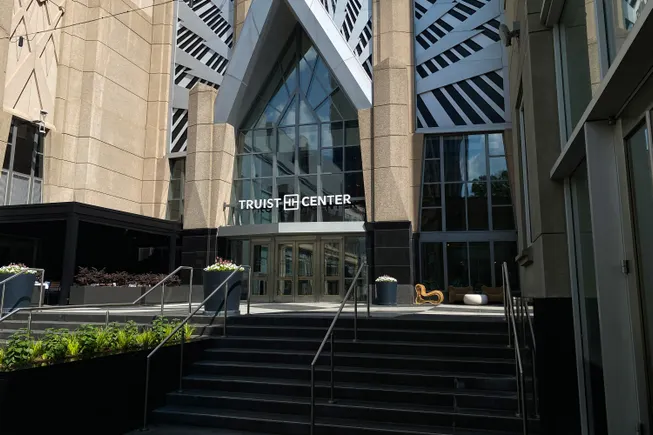The Mallinckrodt Institute of Radiology (MIR) at Washington University School of Medicine in St. Louis is establishing a new center dedicated to developing AI-based imaging tools to improve the precision diagnosis and treatment of cancers, cardiovascular disease, neurological diseases and many other conditions. The new Center for Computational and AI-Based Imaging Sciences brings together collaborators from across WashU Medicine and others from WashU’s McKelvey School of Engineering.
AI has already shown promise through its ability to analyze large collections of medical images to generate clinically relevant insights, identifying patterns and abnormalities that doctors would not otherwise be able to detect on their own.
The Mallinckrodt Institute of Radiology has long been a national leader in the development of innovative imaging technologies, from the invention of positron emission tomography to today’s applications of AI in diagnostics and image analysis, and this new center represents an ambitious expansion of our capabilities. Integrating AI into imaging will improve how we diagnose disease, predict its progression, and tailor treatments to the unique needs of each patient.
Pamela K. Woodard, MD, Elizabeth E. Mallinckrodt Professor and Head of MIR at WashU Medicine
The new center will help advance AI-based imaging technologies, such as two recently developed at WashU Medicine – in collaboration with MIR – that are being commercialized. A tool can analyze mammograms to predict a patient’s risk of breast cancer over the next five years.
Another quickly maps the brain to help neurosurgeons plan delicate surgeries and avoid sensitive areas that control speech, movement and cognitive functions. The center will be a center of expertise in image analysis that uses sophisticated computing tools to find patterns in datasets of millions of anonymized medical images and patient records, providing insight into disease progression and potential treatment. The center will also support training on these tools for clinicians and researchers.
The new center will join a growing WashU ecosystem of collaborative AI initiatives that are helping shape the future of medicine. These include the Center for Health AI (CHAI), which was created as part of a joint agreement to establish deeper collaboration between BJC Health System and WashU Medicine and aims to make health care more personalized and effective for patients and more efficient for providers; and the AI for Health Institute at WashU McKelvey Engineering, which is working on other AI-based medical innovations.
The Center for Computational and AI-Based Imaging Sciences will primarily focus on developing AI-based medical imaging applications that integrate information from different types of imaging – ranging from digital microscope images of cells to MRI scans to X-rays – to identify clinically informative connections between them. This may include the identification of previously unknown early indicators of disease onset, which could enable more effective clinical interventions.
The center will bring together AI imaging experts and researchers from across the medical campus, including the Siteman Cancer Center, based at Barnes-Jewish Hospital and WashU Medicine, as well as the school’s departments of medicine, neurology, psychiatry and radiation oncology.
A clear picture of the future of medicine
The new center will house information from the imaging databases of all participating departments, collectively representing a range of imaging modalities for many disease types. AI-based tools developed from these large data sets will enable increasingly accurate diagnosis for each patient, Woodard said.
AI algorithms applied to medical imaging have already been used to detect and classify new subtypes of certain disorders in ways that can guide clinical treatment decisions. The breadth of information that will be available in the new center will accelerate this work across a wider range of conditions.
The new center will be led by Mark Anastasio, PhD, a leading expert in computational imaging science and AI for imaging applications. He joins WashU as the Mallinckrodt Endowed Professor in Imaging Sciences for MIR, where he will also serve as vice chair of Imaging Sciences and AI Research. He will also be a professor of electrical and systems engineering at McKelvey Engineering. Anastasio comes to WashU after working at the University of Illinois at Urbana-Champaign, where he led the bioengineering department for the past six years.
“Institutions with leading academic medical centers that unite medical data, clinical expertise and advanced AI research will lead the next revolution in healthcare,” Anastasio said. “WashU is exactly such an institution and an ideal home for this center that will allow us to build a community to drive innovation that advances patient care in a way that few other institutions can.”
As part of this community building, Anastasio will join the leadership team of the Oncology Imaging Program at Siteman Cancer Center. He will also serve as associate director of research information for biomedical imaging at the Institute for Computing, Data Science and Biostatistics (I2DB), where he will work with institute director Philip RO Payne, PhD, the Janet and Bernard Becker Professor of Medicine. Payne also serves as head of health AI for CHAI and vice chancellor for biomedical informatics and data science at WashU Medicine.
“AI-based imaging has the potential to be as transformative for medicine as previous waves of innovation – from the adoption of electronic health records to the rise of precision medicine and the advent of real-world evidence generation,” Payne said. “This transformation is being achieved here at WashU Medicine because of the dynamic and collaborative environment that exists at our institution, exemplified by cutting-edge transdisciplinary initiatives like this one. »
Aaron Bobick, PhD, dean of WashU McKelvey Engineering and James M. McKelvey Professor, said dedicated centers like this will be crucial to maximizing the medical and technical expertise needed to develop the potential of AI in medical applications.
“Medical imaging offers some of the most exciting challenges in imaging science and artificial intelligence, two core areas for McKelvey Engineering,” Bobick said. “I am confident that the innovations this center will facilitate by combining the skills of WashU Engineering faculty with WashU Medicine’s broad range of medical expertise will lead to advances that both advance science and benefit patients.”










